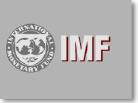|
IMF agrees on Brazil loan
|
 |
November 13, 1998: 2:58 p.m. ET
IMF, wealthy nations announce $41B rescue package to stave off meltdown
|
NEW YORK (CNNfn) - The International Monetary Fund, backed by a group of leading industrial nations, announced more than $41 billion in new loans Friday for Brazil, a much-anticipated rescue package designed to reinvigorate the country's battered currency and rescue Latin America's largest economy from impending collapse.
The emergency loan package includes $18 billion from the IMF and $4.5 billion each from the World Bank and Inter-American Development Bank (IADB), and billions of dollars more from the United States, Japan and other bilateral donors.
The IMF said $37 billion of the total will be available to Brazil over the next 12 months, if needed. Moreover, the IMF said it could release another $9 billion to Brazil immediately after its three-year loan package is approved by the IMF board.
The United States will provide roughly $5 billion, making it the largest bilateral contributor to the package. Other nations are contributing about $9 billion more, bringing the total package to just under $42 billion.
"It is vitally important for Latin America, the rest of the world and the United States that the international community take all steps sensible to limit the contagion that has come from the Asian financial crisis, and helping Brazil is very important in that respect also," Treasury Secretary Robert Rubin said. "What is most important though in this instance … is the effective implementation of a strong economic program that Brazil has announced."
Battling devaluation
The international aid package is necessary to help Brazil prevent an Asian-style financial meltdown. The funding is expected to help the country bring back overseas investors, restock its currency reserves, and stave off a devaluation.
More specifically, it is intended to protect the currency from devaluation by providing emergency credit lines to discourage speculators. It also will force Brazil to tame its gluttonous spending habits that have run up a $60 billion budget deficit.
Brazil was hailed as a Latin American success story after implementing an inflation-slashing economic stability plan in 1994.
But that was before the spending, and before Asia and Russia succumbed to an economic crisis themselves.
If Brazil buckles under the weight of a currency devaluation, economists fear all of Latin America may be thrown into recession.
Brazil's currency, the real, has been ravaged since Russia devalued the ruble in August, triggering a massive flight of capital from emerging markets.
The IMF can ill-afford another fiasco like Russia, where a $23 billion bailout package was approved in July but fell apart weeks later when Russia devalued its ruble and halted overseas debt payments.
The devaluation sent world financial markets tumbling and nearly bled dry Brazilian currency reserves.
Analysts say the loan package may rescue Brazil from a similar fate, but it's going to be no picnic ahead for its citizens.
The financial aid package will require tough cuts in social services and, coming on top of consumer interest rates of 100 percent, is expected to hurl the $800 billion economy into recession next year.
Negotiations between the IMF and Brazil have dragged on for weeks, slowed by elections and congressional haggling over the government's three-year austerity program, which will underpin the international loan package.
John Welch, chief Latin American economist for Paribas, said part of the reason the package has taken so long to pull together is that banks are more gun-shy now after the IMF loan fiasco to Russia in July.
"All of the countries concerned are trying to get the commercial banks to come in and help out in this and after the situation in Russia, that's become very hard," he said. "Many of those banks have been generous and then were put in a very bad situation after Russia defaulted."
In addition to its direct contribution, the U.S. administration planned a large increase in trade finance to help Brazilian firms and the government buy U.S. goods.
Officials said the U.S. Export-Import Bank and the U.S. Overseas Private Investment Corp. also are preparing more than $2.5 billion in trade financing, aimed at helping Brazilian firms buy U.S. goods.
All 15 European Union states have agreed to support an International Monetary Fund rescue package for Brazil, the Austrian EU presidency said Friday.
EU states will provide $7.55 billion in bilateral contributions, a spokesman for the Austrian Finance Ministry said.
Regarding speculation that Argentina and Brazil may merge their currencies, much like Europe, Welch said he believes the two countries already have started the process.
"Both countries are very closely tied to the dollar, Argentina more so than Brazil," he said. "Brazil has never had the wide use of the dollar internally the way Argentina and other Latin American countries have. But certainly there has been a strengthening of the dollar bloc in this hemisphere and I suspect that's going to continue, especially as integration between Brazil and Argentina…goes on. " 
-- from staff and wire reports
|
|
|
|
|
 |

|

